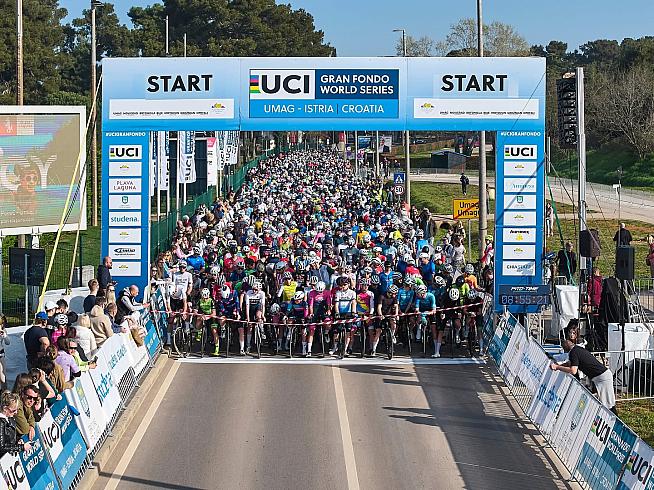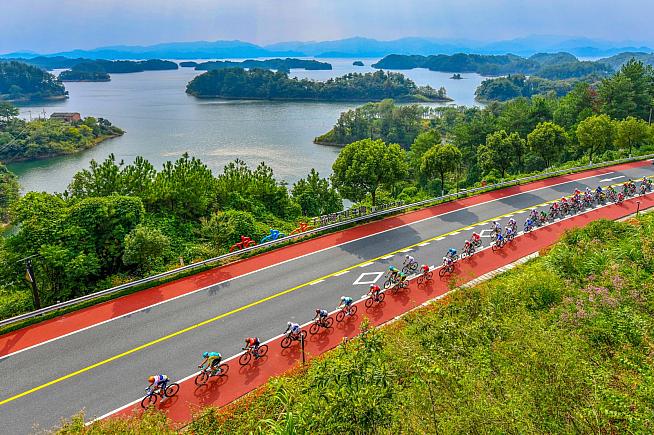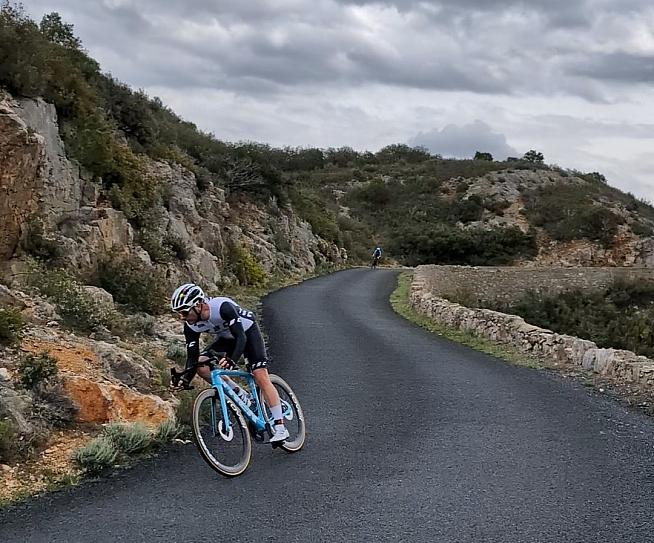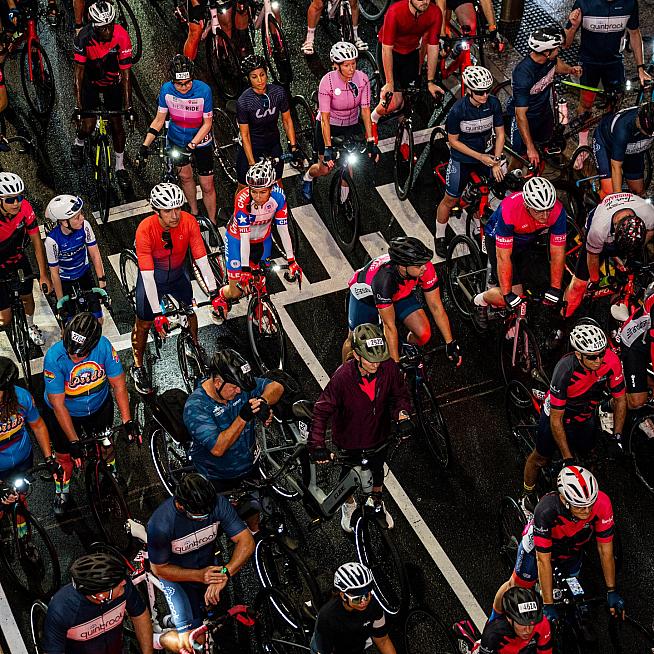Earning your spot at the UCI Gran Fondo World Championships is a major achievement - but it's only the beginning.
Set in Lorne (Australia) along the breathtaking Great Ocean Road, the 2025 edition challenges riders with 122 kilometres of racing and nearly 1,900 metres of climbing. To truly compete, you need more than fitness - you need a strategy built on specificity, resilience, and detail. This guide helps you go from "ready" to racing with purpose.

1. The Terrain Will Test Every System
The course begins with a long climb into the Otways, where the race often splits early. But surviving the climb is only part of the story. What follows are rolling hills, sharp kickers, fast technical descents, and long, wind-exposed roads where tactics, drafting, and durability all come into play.
2. Periodise with Purpose
Approach your preparation in structured phases:
- Base (3+ months out): Build aerobic capacity with long Zone 2 rides and strength work (off-bike or low-cadence hill efforts).
- Build (6-12 weeks out): Introduce tempo and threshold intervals that simulate the race's demands.
- Peak (final 4-6 weeks): Sharpen with race-like efforts and reduce volume to ensure freshness.
This structure ensures you're adapting at the right time and targeting the demands of race day - not just accumulating random miles. You can learn more about structuring your season in this guide.
3. Durability: The Race-Winning Difference

Train this ability with:
- Long rides with intensity late: Finish your 4-hour rides with 2x10min at FTP or all-out efforts to mimic final-race surges.
- Progressive intensity rides: Ride the first half easy, then increase to sweet spot or threshold in the second half.
- Back-to-back hard days: Doing quality sessions on tired legs teaches your body and mind to respond under stress.
Durability isn't about how strong you are at the start - it's how well you perform at the end.
4. Train Smarter, Not Just Harder
Focus on quality sessions that simulate real-world efforts:
- Surge and settle intervals: Mimic race dynamics with VO2 surges followed by sustained threshold efforts.
- Rolling terrain simulations: Ride routes with varied elevation to build responsiveness and pacing control.
- Controlled group rides: Stay disciplined in fast group rides to work on positioning, drafting, and tactical awareness.
5. Pacing is a Weapon, Not a Guess
Pacing errors destroy races. The key is to avoid burning matches too early, especially on the opening climb. Use a power meter or heart rate monitor to keep yourself just under threshold. Your best race might come from holding back early so you can attack when others fade.
6. Fueling is Part of Your Training
Every long ride is an opportunity to perfect your nutrition strategy. For most riders, the sweet spot is 60-90g of carbs per hour, combined with hydration that suits the weather conditions. Practise eating and drinking while riding at intensity so it feels second nature on race day.
7. Technical Skills Save Energy
Fast descents, crosswinds, and group dynamics all demand technical competence. Practise:
- Descending with control: Learn braking zones, body position, and smooth cornering.
- Echelon positioning: Ride with others in windy conditions and learn how to rotate through a paceline.
- Riding close: Get comfortable riding in tight groups at high speeds.
Being efficient here conserves energy for the moments that matter most.

8. Gear Choice and Setup Matters
Choose comfort, confidence, and functionality over marginal gains:
- Compact gearing or 1:1 ratios for steep gradients.
- Disc brakes for control on wet or technical descents.
- Tubeless 28-30mm tires for reduced rolling resistance and improved comfort.
- Reliable nutrition storage so you stay self-supported without overloading.
- Use your exact race setup in training — nothing new on race day.
9. Final Weeks: Course Recon and Tapering
Arrive in Lorne at least 5-7 days before race day to pre-ride key sections and adapt to conditions. Use this time to taper - reduce training volume, maintain some intensity, and recover deeply. Avoid last-minute stress. Focus on logistics, rest, and mindset.
10. Go From Qualified to Competitive

This is your chance to deliver your best ride on a world-class stage. If you'd like to get some more tips, explore this guide here.
Need Help Putting It All Together?
At ProCyclingCoaching, we create personalised plans through coaching that target your weaknesses, build durability, and prepare you for the unpredictable nature of championship-level events. Our expert coaches offer structured plans, data analysis, and feedback that helps you train with intent - and perform with confidence.
0 Comments





